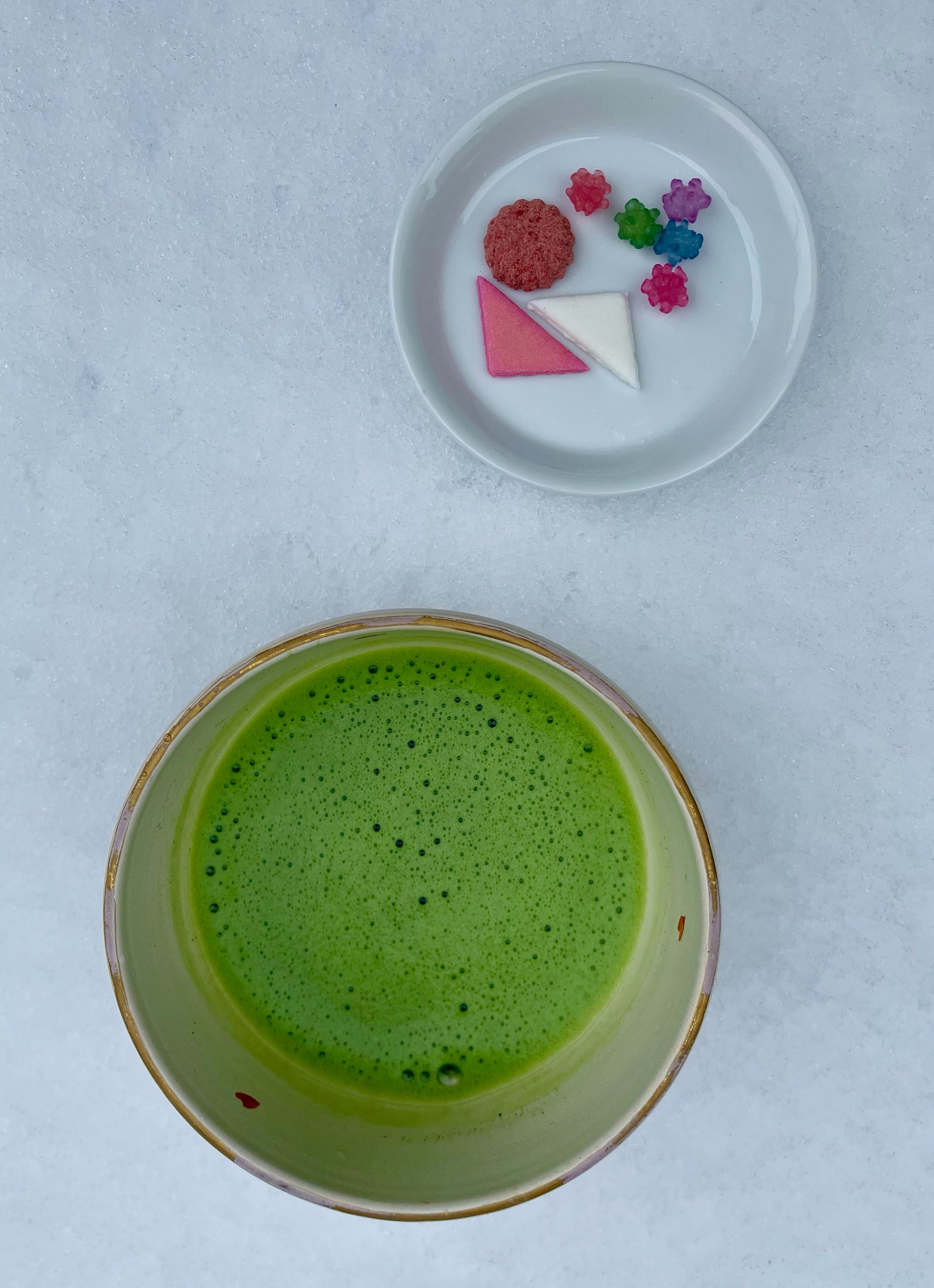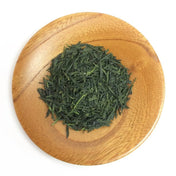As some of you may have been aware, February 6th marked the day of matcha in Japan. In a previous blogpost on Yunomi, we touched on some of the tea anniversaries in Japan so we will not get into that today. Instead, we will delve into the day of matcha and touch on Nishio, one of the leading matcha producing areas in Japan.
The Day of Matcha is on February 6th and was established in 1992 by the Nishio Tea Trade Association (Japanese: 西尾茶協同組合) to commemorate the 120th anniversary of Nishio Tea. For those of you who may be unfamiliar, Nishio, Aichi Prefecture is a region that is famous for their top quality matcha production. The day of matcha was chosen to fall on February 6th because it is a play on words in Japanese. In Japanese, “2” and “6” can be pronounced together as "furo", which, in the Japanese tea ceremony, refers to the portable brazier; furo (「風(2)炉(6)), that is used to boil water.
Currently, furo is used during the summer tea ceremony season from May to October. Yet, the original method of the tea ceremony always requires a furo, and it is still used in the highest form of tea ceremony. As mentioned previously, a furo is a portable brazier used in Japanese tea ceremonies to heat water for tea-making. It is typically made of ceramic, iron, or clay and has a small opening in the top to accommodate a kettle or pot for boiling water. During the tea ceremony, the furo is placed in the center of the room and serves as the central focal point for the guests. My grandmother (now passed) who practiced the tea ceremony had a tatami room for tea ceremonies at the entrance of her house. I remember at the center of the tatami floor was a place for the furo. Although my memories are a bit cloudy, when my grandmother served us matcha, we would all gather facing her and the furo, as this was where she would scoop the hot water to make the matcha. The furo serves as an essential component of the tea ceremony and its design and construction are carefully considered to ensure that it complements the aesthetics and atmosphere of the occasion.
 Image of furo; from AC Photo.
Image of furo; from AC Photo.
Nishio tea
As touched on briefly above, Nishio, Aichi Prefecture is a region that is famous for their matcha. “Nishio-cha” basically means tea that is produced in Nishio City and neighboring Anjo City. Most of the tea that is produced as Nishio-cha is processed as matcha. Some of the definitive characteristics of Nishio tea is its dark green tea leaves, elegant aroma, and rich flavor.
The roots of Nishio matcha
In the Mikawa region where Nanzanen is located, "Nishio Matcha" is said to have its origins in the year 1271, when Shoichi Kokushi, the founder of Jissoji Temple, planted a tea tree on temple grounds. The theory goes that generations of priests from the temple traveled to China to practice Zen Buddhism and subsequently introduced both tea and Zen culture to this area. Records also indicate that during the Edo period, the famous shogunate Tokugawa Ieyasu encouraged tea cultivation in Nishio and made orders for the tea produced in Nisho to be made as a royal tribute.
To provide a bit more context, tea was originally valued as medicine for the nobles. So, even before the tea industry started to flourish in Nishio, it was well known that growing tea could contribute to financial gain. In fact, historical records indicate there were prized tea plants that were bought and sold. Around the 1690’s was when tea plants were planted extensively across Nishio City.
When Japan opened its doors internationally in 1858 and trade with other countries began in earnest, tea became the second most important export item, after raw silk. Consequently, interest in domestic tea rapidly increased. Production of Nishio tea became popular around the year 1872 (Meiji Period 5) when the method of making matcha was introduced from Uji, Kyoto Prefecture. Being surrounded by two major tea producing regions, Kyoto and Shizuoka greatly influenced Nishio as numerous people aspired to pursue a career in the tea industry.
Despite all of the energy that was building around tea in Nishio, because it was a latecomer compared to Kyoto and Shizuoka, it was not possible to compete with the tea businesses in those areas. For this reason, Nishio adopted a strategy to differentiate itself from other production areas by focusing on producing high-quality teas such as gyokuro. Nishio's tea merchants also conducted research and refined their tea-making techniques. Even with all these efforts, there seemed to be little hope. Finally, tea enthusiasts in Nishio decided to focus on tencha production , which had the highest market price at the time.
The main reason for this was that demand for tencha was particularly high in the Owari region (present-day Nagoya region), which was Nishio’s main trading partner. There was a high demand for matchan the Owari region due in part to the influence of the Owari Tokugawa family (especially during the era of the 7th generation Muneharu) and also because the tea ceremony culture had permeated even amongst the common people. Note that according to the ``Economic Geographical Study of Nishio Tea'' of Showa Period 6 (1931), the Owari region accounted for 40% of Japan's total consumption of tencha. In this way, the tea industry began its journey in Nishio, leading to the current matcha producing region that it is today.
Nishio-cha (i.e., Nishio tea) is the very first regionally branded matcha brand. Currently, Nishio tea is often also utilized in processed foods such as matcha ice cream. Hence, it does not just promote tea for the Japanese tea ceremony, it is also a regional tea association promoting matcha to be enjoyed in a wide variety of ways.
A bit about the terroir of Nishio matcha
Nishio matcha is produced in the Southern Mikawa region of Aichi Prefecture, where the Yahagi River (Japanese: Yahagigawa) flows through. Similar to many other tea producing regions in Japan, Nishio is warm and fertile. Noteworthy are the blessings of the Yahagi River, which leads to fertile land, and river mist; both suitable for growing high-quality tea. Over 90% of all the tea leaves cultivated in the Nishio region are tencha, or green tea leaf flakes, the type of leaf used for creating matcha. This depicts this regions’ dedication to matcha making.
Additionally, although one need not think much about stones when it comes to tea, for matcha, it is a different story. Perhaps it is not a coincidence that Nishio is also an area that is a source of high-quality stone. Neighboring the area is Okazaki City, an area which produces Mikageishi granite, a type of stone with the ideal hardness and fine texture for grinding matcha. Notably, many of the matcha tea mills in Kyoto as well as other parts of Japan are produced in Okazaki, and the quality of Okazaki’s stone and stonework techniques are said to be topnotch in Japan. These are the reasons why Nishio still shines as a matcha village today.
 Stone mill at Aoi Seicha. Photo by Aoi Seicha.
Stone mill at Aoi Seicha. Photo by Aoi Seicha.
Matcha grades and quality
Going back to the day of matcha, have you been surprised by the range of prices for matcha, from reasonable to very expensive, on Yunomi but also across the market in general? Matcha differs in color, aroma, and taste depending on where it is produced and the time taken to make it, which is reflected in its grade and price. There is unfortunately no objective standard for grading matcha, and you might see the term "ceremonial grade" used for matcha products sold online even though the quality of the matcha may be barely drinkable. If you would like a detailed breakdown on all of the different grades on matcha on Yunomi, please refer to: Yunomi Matcha grades.
In general, matcha can be broadly divided into matcha for drinking, which is used for tea ceremony purposes, and matcha for food processing. Below, we highlight some of the main differences between the two.

Here, it may also be important to point out that in Japan, we do not use the ceremonial categorization of matcha. In fact, people who practice the tea ceremony in Japan refer to matcha in two basic grades: lower-quality matcha appropriate for serving as usucha (thin tea) and very high quality matcha appropriate for serving as koicha (thick tea).. That being said, in general, most traditional matcha producers will blend their tencha into these two categories although standards have changed with time. With these Japanese standards however, both will fall under the ceremonial grade category which makes things a bit confusing.
Please see article: Discover koicha, the thick matcha of formal tea ceremonies to learn more about the distinction between usucha and koicha.
Matcha snacks available for a limited time
Now that we’ve touched on matcha quality, I’ll wrap this article up with a note on matcha snacks. Around this time of year in Japan, there are many matcha-based snacks (Japanese: お菓子 (okashi)) being sold at the grocery stores and convenience stores. Some of these are limited editions that only last for a certain period of time. For example, Morinaga & Company, Ltd (Tokyo, Japan) released a limited-time chocolate confectionery themed around the combination of sweets and matcha. They will be using Nishio matcha from Nishio City, Aichi Prefecture in their new matcha snacks, “Matcha Cheesecake'', ``Matcha Gateau Chocolat'', and ``Matcha Tart''. In fact, on my grocery trip around the day of matcha, I was surprised to see so much green packaging in the snacks aisle I could not resist purchasing some of these matcha-based snacks and chocolates. Clearly, the matcha that is used in these snacks is not of the highest quality because it is matcha made specifically for the use of sweets. In fact, tea enthusiasts could argue whether the so-called “matcha” made from powdered tea even qualifies to be called matcha when it is not made from tencha. Moreover, part of the confusion stems from the fact that the culinary grade matcha (made from powdered tea) is being labeled as “matcha” to begin with. Well, perhaps, this is an argument for a different day! I still believe it can be fun to try and explore the different forms that matcha takes on. And don’t worry if you are not in Japan during this time. At least for now, there will always be some matcha snack for you to try and some can even be found overseas. Happy matcha explorations!
 Some of the matcha snacks available during this time. While I care about where my matcha comes from, for drinking purposes, buying these snacks made me realize I have not been aware of culinary matcha roots. A lot of the matcha snacks I bought had a note about Uji matcha. One of the cookie bags mentioned the matcha used was from the first harvest.
Some of the matcha snacks available during this time. While I care about where my matcha comes from, for drinking purposes, buying these snacks made me realize I have not been aware of culinary matcha roots. A lot of the matcha snacks I bought had a note about Uji matcha. One of the cookie bags mentioned the matcha used was from the first harvest.
Featured image: A rare occasion, a bowl of matcha in snow, in Tokyo on the day of matcha!
Have additional insights? Please don't hesitate to post comments and/or questions below. Or directly contact me (Moé Kishida): moe@yunomi.life. Thank you!


